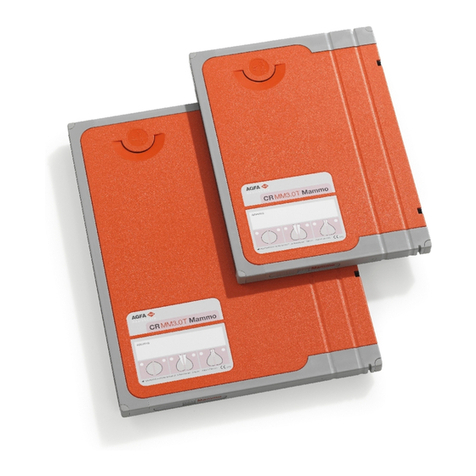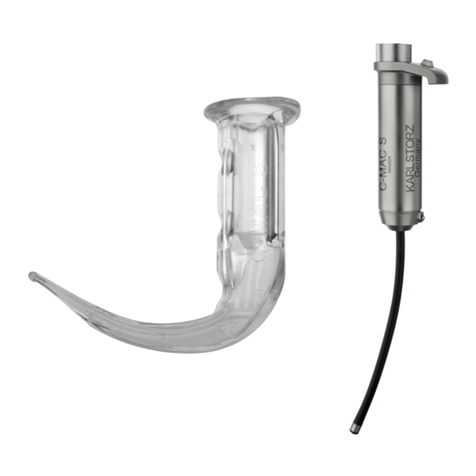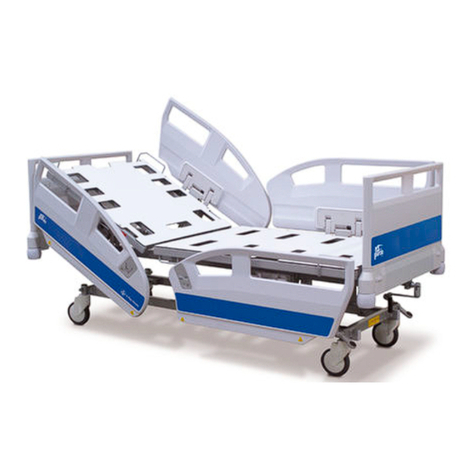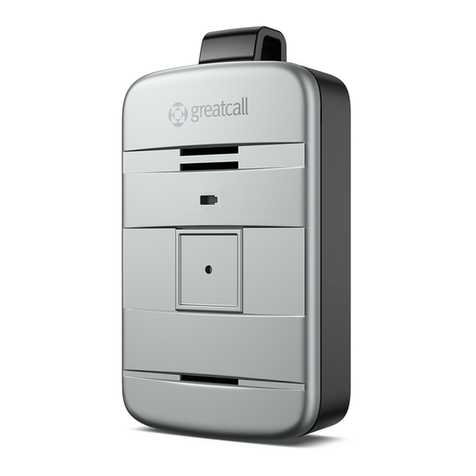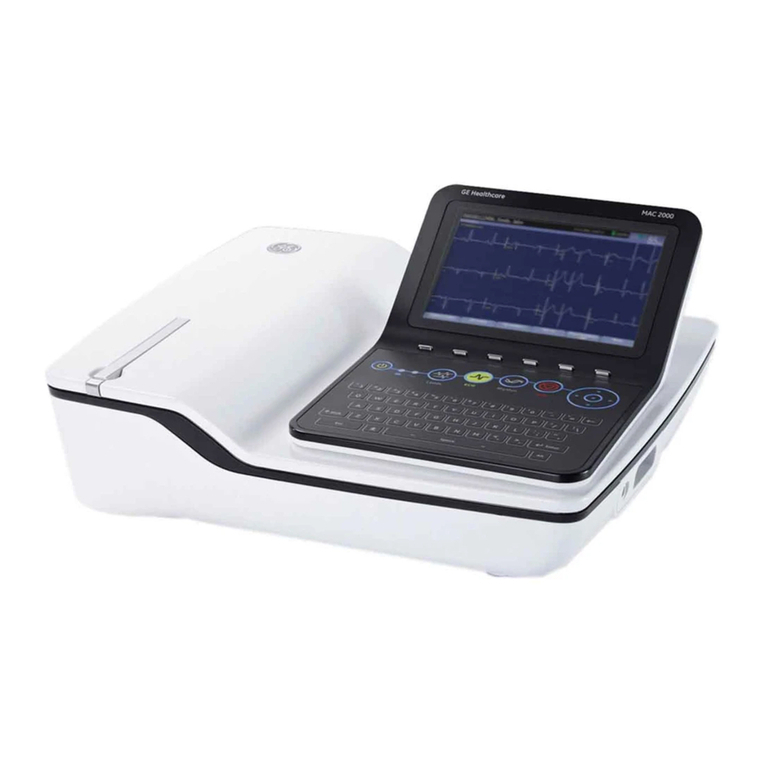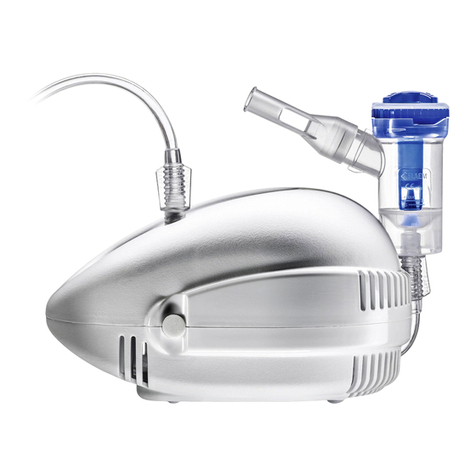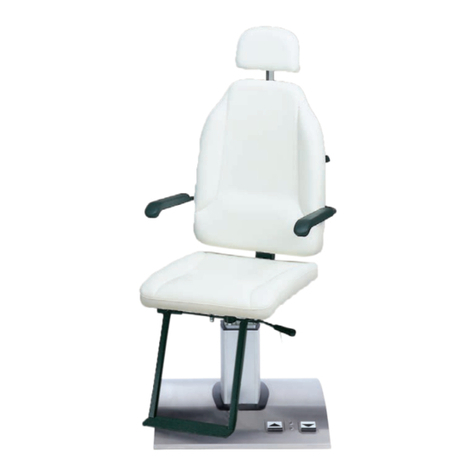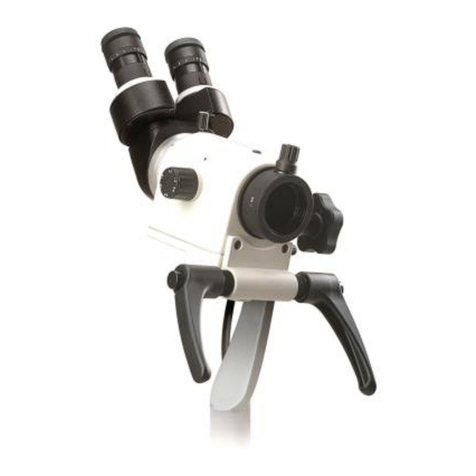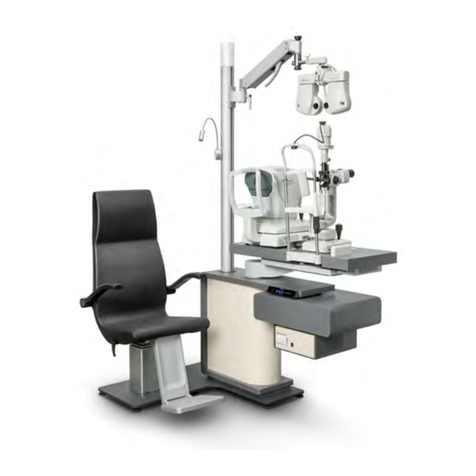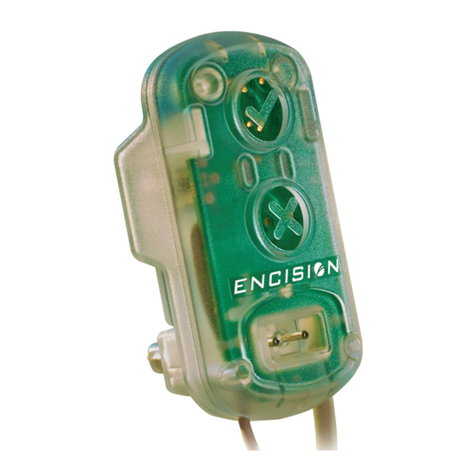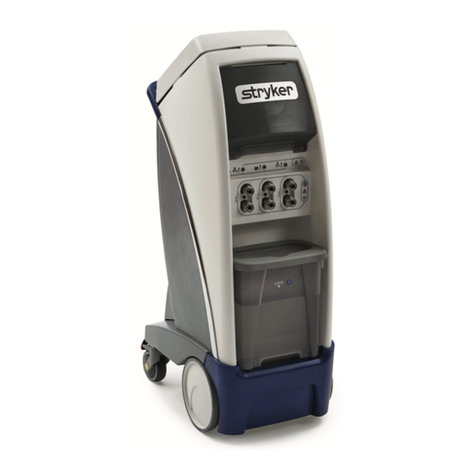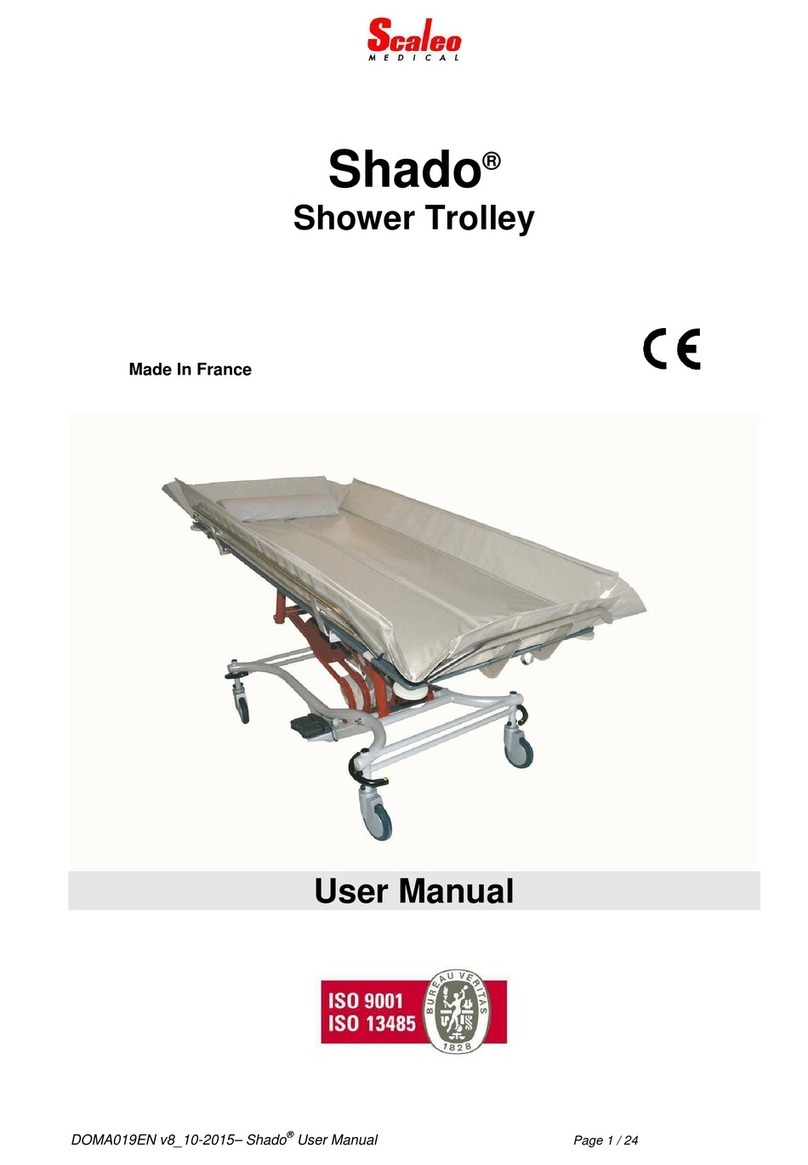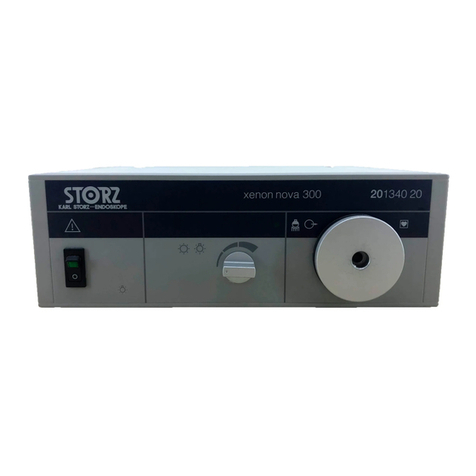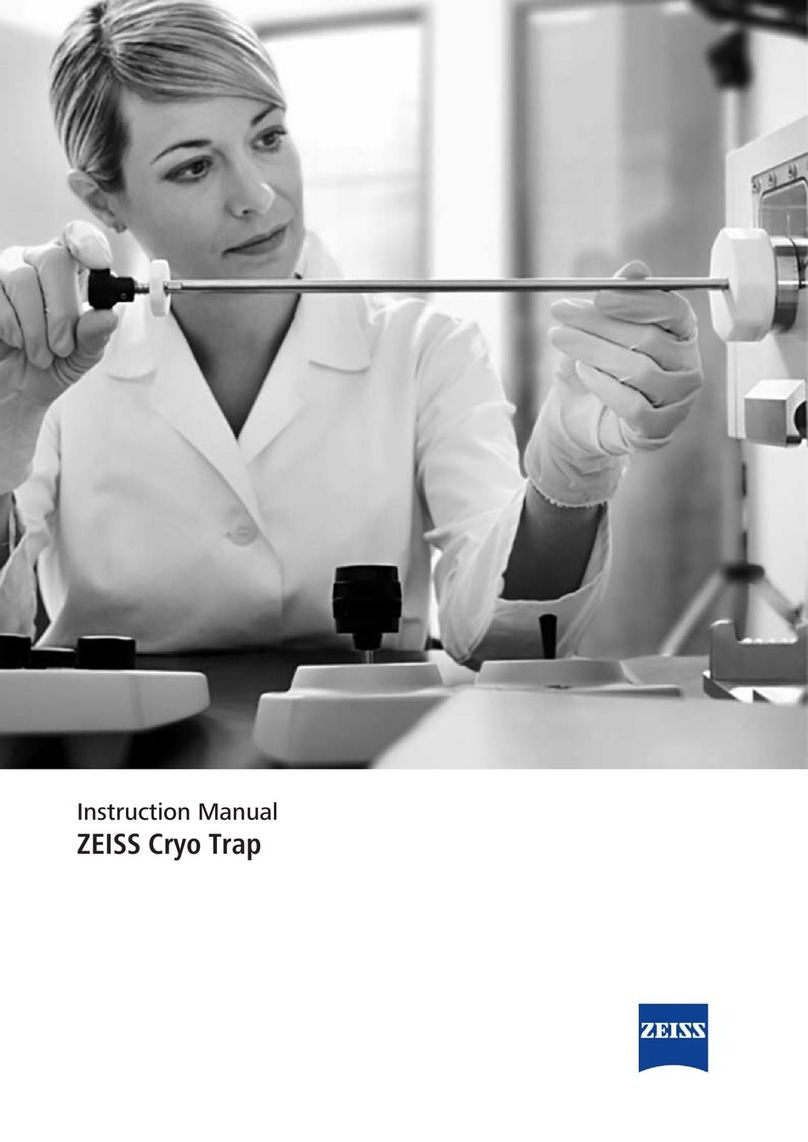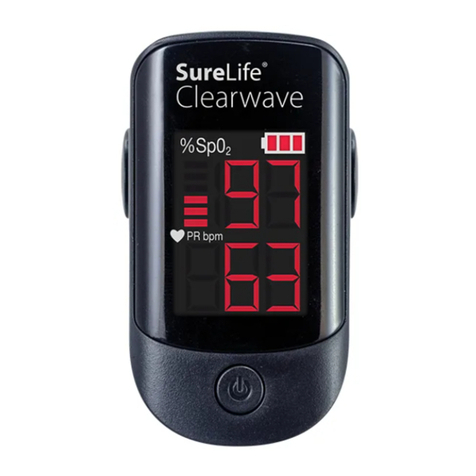Sonoscape E1 User manual

About This Manual
P/N: 4710.01486A01
Product Model: E1
Release Date: January, 2018
Copyright © 2018 SonoScape Medical Corp. All rights reserved.
Statement
SonoScape Medical Corp. (hereinafter called SonoScape) owns the intellectual property rights to
this manual, and also maintains the contents of this manual as confidential information. This manual
is a reference for the operation, maintenance and cleaning of this product and does not convey any
license under the patent rights of SonoScape, nor the rights of others.
This manual contains the information protected by copyrights or patents. Reproduction, amendment
or translation of this manual in any manner whatsoever without the written permission of SonoScape
is strictly prohibited.
All information contained in this manual is believed to be correct. SonoScape shall not be liable for
errors contained herein or for incidental or consequential damages in connection with the furnishing,
performance or use of this manual. SonoScape does not assume any liability arising out of any
infringements of patents or other rights of third parties.
This manual is based on the maximum configuration and therefore some contents may not apply to
your product.
This manual is subject to change without prior notice and legal obligation.
Manufacturer’s Responsibility
SonoScape is responsible for the effects on safety, reliability and performance of this product, only if
all the following requirements are met.
●All installation operations, expansions, changes, modifications and repairs of this product are
conducted by SonoScape authorized personnel.
●The use or application of the product or the use of parts or accessories is approved by
SonoScape.
●The electrical installation of the relevant room complies with the applicable national and local
requirements.
●The product is used in accordance with the instructions for use.
Documentation
SonoScape provides the documentation consisting of various manuals:
●The basic user manual (this manual) describes the basic functions and operating procedures of
the system.

●The advanced user manual provides information about the measurements and calculations
available in each mode.
●Compact Disc (CD) provides the acoustic output data related to the system.
Understand the meanings of the following items clearly before reading this manual.
Item Meaning
!
Indicates a potentially hazardous situation which, if not avoided, could result in
death or serious injury.
Indicates a potentially hazardous situation which, if not avoided, may result in
malfunction or damage of the system.
Indicates a potentially biological hazardous situation which, if not avoided, may
result in disease transmission.
NOTE Indicates precautions or recommendations that should be used in operating the
system.
Boldfaced
Word
Indicates controls on the control panel, or on-screen objects such as menu items
or keys.
Click Move the cursor to the controls on the display and press the confirm key on the
control panel.
> Select a menu item or a key following the path.
Contact Information
Manufacturer: SonoScape Medical Corp.
Address: 4/F, 5/F, 8/F, 9/F & 10/F, Yizhe Building, Yuquan Road, Nanshan, Shenzhen, 518051,
Guangdong, China
Tel: +86 755 2672 2890
Fax: +86 755 2672 2850
http://www.sonoscape.com
E-mail: [email protected]
EU Representative: SonoScape Europe S.r.l.
Address: Via Luigino Tandura, 74-00128 Rome, Italy
Tel: +39 06 508 2160
Fax: +39 06 508 4752
http://www.sonoscapeurope.com

I
Contents
1 Safety ........................................................................................................................................ 1
1.1 Intended Use............................................................................................................................2
1.2 Safety Precautions ...................................................................................................................2
1.2.1 Electrical Safety............................................................................................................2
1.2.2 Mechanical Safety.........................................................................................................4
1.2.3 Accessories Caring........................................................................................................4
1.2.4 Biohazard Considerations.............................................................................................5
1.3 Acoustic Power Principle ........................................................................................................5
1.3.1 Biological Safety...........................................................................................................6
1.3.2 ALARA.........................................................................................................................6
1.3.3 Mechanical and Thermal Indices..................................................................................6
1.3.4 Probe Surface Temperature Limits ...............................................................................7
1.3.5 Imaging Functions that Change Acoustic Output.........................................................8
1.4 Safety Symbols........................................................................................................................8
2 System Overview ................................................................................................................... 11
2.1 System Configuration............................................................................................................12
2.2 Physical Specifications..........................................................................................................12
2.3 System Components..............................................................................................................12
2.3.1 Front Panel..................................................................................................................13
2.3.2 Side View....................................................................................................................14
2.3.3 Back View...................................................................................................................15
2.3.4 Bottom View ...............................................................................................................15
2.3.5 Control Panel ..............................................................................................................16
2.3.6 Key Panel....................................................................................................................19
2.3.7 Basic Screen................................................................................................................21
3 Preparing the System............................................................................................................ 23
3.1 Positioning the System .........................................................................................................24
3.2 Powering the System.............................................................................................................24
3.2.1 Using the Adaptor .......................................................................................................24
3.2.2 Using the Battery ........................................................................................................25

Contents
II
3.2.3 Installing/Removing the Battery.................................................................................26
3.2.4 Status Indicator ..........................................................................................................27
3.3 Powering On/Off the System.................................................................................................28
3.3.1 To Power On the System.............................................................................................28
3.3.2 To Activate Screen Saver ............................................................................................28
3.3.3 To Enter the Standby Mode ........................................................................................28
3.3.4 To Power Off the System............................................................................................29
3.4 Adjusting the Brightness of the Monitor ..............................................................................29
3.5 Connecting the Probe ............................................................................................................29
3.6 Connecting the Peripheral Device.........................................................................................29
3.6.1 Connecting the Foot Switch (optional).......................................................................29
3.6.2 Connecting the Printer ................................................................................................30
4 Customizing Your System..................................................................................................... 33
4.1 General System Settings........................................................................................................34
4.1.1 General Settings..........................................................................................................34
4.1.2 Display Settings ..........................................................................................................36
4.1.3 Save Settings...............................................................................................................38
4.1.4 Biopsy Settings ...........................................................................................................39
4.2 Exam Preset Settings.............................................................................................................41
4.3 Annotation Settings ...............................................................................................................42
4.3.1 Tools Settings..............................................................................................................42
4.3.2 List Settings ................................................................................................................43
4.4 Body Mark Settings...............................................................................................................44
4.5 Measurement Settings ...........................................................................................................45
4.5.1 General Measurement Settings ...................................................................................45
4.5.2 Application Settings....................................................................................................47
4.5.3 List Settings ................................................................................................................50
4.6 Report Settings ......................................................................................................................51
4.7 Peripheral Devices Settings...................................................................................................53
4.7.1 Basic Settings..............................................................................................................53
4.7.2 Network Settings.........................................................................................................54
4.8 DICOM Settings....................................................................................................................55
4.8.1 DICOM Service Settings ............................................................................................55
4.8.2 DICOM Local Settings ...............................................................................................64

Contents
III
4.9 Help Settings .........................................................................................................................65
4.10 Defining System Defaults ...................................................................................................65
4.10.1 Loading System Defaults..........................................................................................65
4.10.2 Creating System Defaults .........................................................................................66
4.10.3 Exporting or Importing System Defaults..................................................................66
4.11 Viewing System Information...............................................................................................67
5 Preparing for an Exam ......................................................................................................... 69
5.1 Acquiring Patient Information...............................................................................................70
5.1.1 Beginning a New Patient ............................................................................................70
5.1.2 Retrieving Archived Information................................................................................72
5.1.3 Using DICOM Worklist..............................................................................................73
5.1.4 Using Query/Retrieve List..........................................................................................73
5.2 Pausing/Resuming/Completing an Exam..............................................................................73
5.2.1 To Pause an Exam.......................................................................................................73
5.2.2 To Resume an Exam ...................................................................................................73
5.2.3 To Complete an Exam.................................................................................................74
6 Acquiring Images .................................................................................................................. 75
6.1 Selecting a Probe and an Exam Type ....................................................................................76
6.1.1 To Customize a Preset.................................................................................................76
6.1.2 To Arrange the Presets Display...................................................................................77
6.2 Acquiring B-Mode Images ....................................................................................................78
6.2.1 Entering B Mode.........................................................................................................78
6.2.2 Optimizing B-Mode Images .......................................................................................78
6.3 Acquiring M-Mode Images ...................................................................................................83
6.3.1 M Mode.......................................................................................................................83
6.3.2 Optimizing M-Mode Images ......................................................................................85
6.4 Acquiring Spectral Doppler Images (Optional).....................................................................87
6.4.1 PW Mode ....................................................................................................................87
6.4.2 Optimizing Spectral Doppler Images .........................................................................89
7 Working with Images............................................................................................................ 93
7.1 Imaging Features ...................................................................................................................94
7.1.1 Imaging Reverse .........................................................................................................94
7.1.2 Split Screen Display....................................................................................................94

Contents
IV
7.1.3 Auto Optimization.......................................................................................................95
7.1.4 Harmonic Imaging .....................................................................................................96
7.1.5 Panoramic Imaging.....................................................................................................96
7.2 Magnifying an Image ............................................................................................................97
7.2.1 Filling the Full Screen.................................................................................................97
7.2.2 Magnifying the Whole Image.....................................................................................98
7.2.3 Magnifying the ROI....................................................................................................98
7.3 Freezing an Image .................................................................................................................99
7.4 Using Cine.............................................................................................................................99
7.4.1 Reviewing Cine ..........................................................................................................99
7.4.2 Cutting Cine................................................................................................................99
7.5 Annotations and Body Marks ..............................................................................................100
7.5.1 Annotating an Image with Typed Words...................................................................100
7.5.2 Annotating an Image with Arrows ............................................................................100
7.5.3 Body Mark ................................................................................................................101
7.5.4 Deleting Annotations and Body Marks.....................................................................101
7.6 ECG Module........................................................................................................................102
8 Managing Images/Data....................................................................................................... 105
8.1 Storing an Image/Cine.........................................................................................................106
8.1.1 Storing an Image ......................................................................................................106
8.1.2 Storing a Cine ...........................................................................................................106
8.2 Viewing an Image/Cine .......................................................................................................106
8.2.1 Viewing a Current Image/Cine .................................................................................106
8.2.2 Retrieving an Image..................................................................................................108
8.3 Backing up Data ..................................................................................................................108
8.4 Importing Data to the System..............................................................................................109
9 Working with DICOM.........................................................................................................111
9.1 Verifying Connectivity ........................................................................................................112
9.2 DICOM Storage ..................................................................................................................112
9.3 DICOM Print.......................................................................................................................113
9.4 DICOM Worklist .................................................................................................................113
9.5 Query/Retrieve List .............................................................................................................114
9.6 MPPS...................................................................................................................................116
9.7 Storage Commitment...........................................................................................................117

Contents
V
9.8 DICOM Queue ....................................................................................................................117
10 Probes and Biopsy Brackets ............................................................................................ 119
10.1 Probe..................................................................................................................................120
10.1.1 Available Probes......................................................................................................120
10.1.2 Probe Usage ............................................................................................................121
10.1.3 Cleaning the Probe..................................................................................................123
10.1.4 Disinfecting or Sterilizing the Probe ......................................................................124
10.1.5 Sterilizing the Probe................................................................................................127
10.1.6 Disinfecting and Sterilizing the Probe Cable..........................................................127
10.1.7 Storage and Transportation .....................................................................................128
10.2 Biopsy................................................................................................................................129
10.2.1 Available Biopsy Brackets ......................................................................................129
10.2.2 Assembling the Biopsy Bracket..............................................................................130
10.2.3 Preparing for a Biopsy ............................................................................................133
10.2.4 Verifying the Biopsy Bracket..................................................................................133
10.2.5 Performing a Biopsy ...............................................................................................134
10.2.6 Cleaning the Biopsy Bracket ..................................................................................135
10.2.7 Sterilizing the Biopsy Bracket ................................................................................135
10.2.8 Storage ....................................................................................................................136
11 System Maintenance ......................................................................................................... 137
11.1 Cleaning the System ..........................................................................................................138
11.1.1 To Clean the System Surface ..................................................................................138
11.1.2 To Clean the Trackball ............................................................................................138
11.2 Maintenance Checks..........................................................................................................139
11.2.1 Electrical Safety ......................................................................................................139
11.2.2 Battery Safety .........................................................................................................139
11.2.3 Mechanical Safety...................................................................................................139
11.2.4 Image Recording.....................................................................................................139
11.3 Troubleshooting.................................................................................................................139
11.4 Equipment Disposal...........................................................................................................140
11.5 Customer Service...............................................................................................................140
Appendix A Specifications..................................................................................................... 141
Appendix B EMC Guidance and Manufacturer’s Declaration ......................................... 142

Contents
VI
B.1 Electromagnetic Emissions.................................................................................................142
B.2 Electromagnetic Immunity .................................................................................................142
B.3 Recommended Separation Distances between Portable and Mobile RF Communications
Equipment and the Equipment ...................................................................................................145
Appendix C In Situ, Derated, and Water Value Intensities ............................................... 146
Appendix D Recommended Coupling Gel, Cleaner and Disinfectant .............................. 147
D.1 Coupling Gel ......................................................................................................................147
D.2 Cleaner................................................................................................................................148
D.3 Disinfectant.........................................................................................................................149
Appendix E Acoustic Output Data ....................................................................................... 150

1
1 Safety
This chapter describes the important information for operating this system. To ensure the safety of
both operator and patient, please read the relevant details in this chapter carefully before using this
system.
You should be thoroughly familiar with the precautions provided in this manual. Otherwise, the
manufacturer is not responsible for the effects on safety, reliability and performance of the system.

1 Safety
2 Basic User Manual
1.1 Intended Use
The system is intended for the following applications: Fetal, Abdominal, Pediatric, Small
Organ (breast, testes, thyroid), Cephalic (neonatal and adult), Trans-rectal, Trans-vaginal,
Peripheral Vascular, Cerebral Vascular, Musculo-skeletal (Conventional and Superficial),
Cardiac (pediatric and adult), OB/Gyn and Urology.
The system also provides the measurement and calculation packages used for clinical
diagnosis purposes. For details, please refer to the advanced user manual.
Contraindication: The system is not intended for ophthalmic use or any use causing the
acoustic beam to pass through the eye.
!
Precautions must be considered in the use of any application. Otherwise, it may result in
system damage or serious injury.
1.2 Safety Precautions
Read and understand all precautions in this manual before attempting to use the system.
Keep this manual with the system at all times. Periodically review the procedures for
operation and safety precautions.
1.2.1 Electrical Safety
!
●Only qualified physicians or sonographers can perform ultrasound scanning on human
subjects for medical diagnostic reasons.
●Any unauthorized personnel should not tamper with the main unit of the system.
●Do not service or maintain the system while it is in use with a patient.
●Do not position the system to make it difficult to disconnect the system from the
mains supply.
●Do not use the system with flammable anaesthetics (category AP) or flammable
anaesthetics with oxidants (category APG).
●Do not use the system with other equipment such as an electric knife, high-frequency
therapy equipment, or a defibrillator. Otherwise, electrical shock may occur.
●Connect the protective earth conductor only before powering on the system.
Disconnect the ground wire only after powering off the system. Otherwise, electrical
shock may occur.
●Connect the system to the other electrical equipment by using the potential-
equalization lead wire before connecting the power plug of the system to an electrical
outlet.
●Do not place the multiple socket-outlet on the floor.

1 Safety
Basic User Manual 3
●The video printer should be connected to the specific interface by using the cable
provided by the manufacturer. Otherwise, electrical shock may occur.
●Within the environment that is 1.8 meters (6 feet) around a patient, connect peripherals
to the auxiliary power outlet which is capable of isolation protection; or, power the
peripherals by the auxiliary output cable or the isolation transformer complied with
EN/IEC 60601-1, or the power input of the same safety level.
●Within the patient environment, when removing the covers or the connectors from the
non-medical electrical equipment without tools during maintenance, calibration or
other operations, do not touch the parts of the non-medical electrical equipment and
the patient simultaneously.
●Use only the probes provided by the manufacturer. Otherwise, the system will not
perform, and an accident such as a fire may result in the worst case.
●Only the peripherals and accessories provided or recommended by the manufacturer
can be used. Using other devices or accessories may degrade the system performance
and even cause electrical shock.
●Do not pour any fluid onto the system surfaces, as fluid seepage into the electrical
circuitry may cause excessive electrical current leakage or system failure. If any
water is spilled onto the system carelessly, stop using the system and contact the local
distributor immediately.
●The AC power plug for the system is a three-prong grounded plug and should never
be adapted to any two-prong outlet or by using an adapter. Connect the AC power
plug of the multiple socket-outlet to a hospital-grade power outlet.
●If the system is transported to the operating environment with a great temperature
change, leave it for approximately 4 hours before powering it on. Ensure that the
temperature and humidity inside and around the system are equivalent before an
operation.
●Do not use the system around a strong electric field, a strong electromagnetic field,
or the devices which generate radio waves, such as a radio, cellular telephones, or
transceivers. Using the system in an improper environment may result in malfunction
or damage.
●Select the conformed multiple socket-outlet with protective grounding,and ensure
that its maximum output power exceeds the requirement of the system.
●The multiple socket-outlet can only be used to provide power to the recommended
peripherals of the system.
●Do not connect other devices to the multiple socket-outlet. Otherwise, the rated output
power of the multiple socket-outlet may be exceeded, and it may result in failure.

1 Safety
4 Basic User Manual
●Accessory equipment connected to the analog and digital interfaces must be certified
according to the respective EN/IEC standards (for example, EN/IEC 60950 for data
processing equipment and EN/IEC 60601-1 for medical equipment). Furthermore, all
configurations shall comply with the system standards EN/IEC 60601-1.
●Do not use an endocavitary probe on the body surface of a patient. Otherwise, the
electromagnetic compatibility of the probe may be degraded.
●If the non-medical electrical equipment used with the system is supplied by a multiple
socket-outlet with separating transformer, connect the AC power plug of the multiple
socket-outlet to a hospital-grade power outlet. Consult a professional to ensure that
the connection complies with the safety standards.
1.2.2 Mechanical Safety
!
●To avoid possible personnel injury and system damage, move the system slowly and
carefully.
●Do not place other objects on top of the control panel. Do not sit on the control panel
or any other part of the system.
●Disconnect the foot switch and the power cable before moving the system.
●Do not knock or shake the system.
●Always use the handle to move the system.
1.2.3 Accessories Caring
!
●
Do not use the foot switch in the operating room.
●Use the probe carefully. If any part of the transducer surface is scratched, stop using the
probe immediately. Otherwise, electrical shock may occur.
●After disinfecting the accessories, wash out chemicals or discharge gases thoroughly
from the accessories. Residual chemicals or gases could result in damage to the
accessories, and be harmful to human bodies.
●Only trained physicians or sonographers under ultrasound guidance can handle the
biopsy needle guides. During the operation, the operator must observe proper needle
insertion sequencing with the needle guide to avoid undue discomforts, unnecessary
risks or injuries to the patient.
●Use the legally marketed probe sheath. Refer to package labeling to determine latex
content. Natural rubber latex may cause anaphylactic reactions in some individuals.
Avoid contact with items containing natural rubber latex. Refer to the FDA Medical
Alert, March 29, 1991.

1 Safety
Basic User Manual 5
●Use the legally marketed coupling gel in accordance with relevant local regulations.
Read and understand all precautions in the relevant manual of the coupling gel before
use.
●Prepare, use, store and dispose the cleaner, disinfectant and sterilant according to the
instructions provided by manufacturers.
●Do not disconnect the probe during the real-time scan. Otherwise, it may damage the
probe and the system.
●Disconnect the probe from the system after freezing an image or powering off the
system. Otherwise, the system or the probe could be damaged.
1.2.4 Biohazard Considerations
●To minimize the risk of cross-contamination or infectious diseases when performing a
biopsy, the operator should wear disposable gloves, protective clothing or protective
goggles if it is needed. Follow the working regulations strictly in case the skin
contacts the samples.
●Some disinfectants or sterilants are acid or alkaline. Use them with caution, and
prevent hands or clothing from coming into direct contact with them. Wash hands or
eyes immediately in case of any contamination by disinfectants.
●Dispose of cleaners, disinfectants or solutions in accordance with local standards or
regulations.
1.3 Acoustic Power Principle
!
●Perform ultrasound procedures prudently under the guidance of the ALARA (as low
as reasonably achievable) principle. Only expose the patient to the lowest practical
transmit power levels in the shortest possible period to achieve a satisfactory
diagnosis.
●Freeze the image at any time if you are not operating the system for a long period of
time.
●Do not scan the same part of an patient continuously or expose the patient to
prolonged scanning. Doing so may harm the patient.
●Do not expose the fetus to prolonged scanning in the Doppler mode.
●Although the output power is automatically controlled for the selected applications,
high TI values should be kept to a minimum or avoided in obstetric applications.
●You should be familiar with the performances and operations of the system, observe
the ultrasound output parameters on the screen at all times.

1 Safety
6 Basic User Manual
1.3.1 Biological Safety
Diagnostic ultrasound is recognized as being safe, but the possibility of biological effects
exists when using it in high exposure levels and long exposure times. Thus ultrasound
should be used in a prudent manner to provide medical benefit to the patient.
1.3.2 ALARA
It is required to practice ALARA when using ultrasound energy. Practicing ALARA
ensures that the total energy level is controlled below a low enough level at which
bioeffects are not generated while diagnostic information is being accumulated. The total
energy is controlled by output intensity and total radiation time. The output intensity
necessary for examinations differs depending on the patient and the clinical case.
Not all examinations can be performed with an extremely low level of acoustic energy.
Controlling the acoustic level at an extremely low level leads to low-quality images or
insufficient Doppler signals, adversely affecting the reliability of the diagnosis. However,
increasing the acoustic power more than necessary does not always contribute to an
increase in quality of information required for diagnosis, rather increasing the risk of
generating bioeffects.
The operator must take responsibility for the safety of the patients and utilize the
ultrasound deliberately. Deliberate use of the ultrasound means that output power of the
ultrasound must be selected based on ALARA. Additional information regarding the
concept of ALARA and the possible bioeffects of Ultrasound is available in a document
from the AIUM (American Institute of Ultrasound Medicine) title “Medical Ultrasound
Safety”.
1.3.3 Mechanical and Thermal Indices
The display of the system consists of two parts: Thermal Index (TI) and Mechanical Index
(MI).
■ MI/TI Explanation
In October 1987, the American Institute of Ultrasound in Medicine (AIUM) ratified a
report prepared by its Bioeffects Committee (Bioeffects Considerations for the Safety
of Diagnostic Ultrasound, J Ultrasound Med.,Sept. 1988: Vol. 7, No. 9 Supplement),
sometimes referred to as the StoweReport, which reviewed available data on possible
effects of ultrasound exposure. Another report “Bioeffects and Safety of Diagnostic
Ultrasound” dated January28, 1993, provides more current information.
●Mechanical Index (MI)

1 Safety
Basic User Manual 7
Mechanical bioeffects are threshold phenomena that occur when a certain level of output is
exceeded. The threshold level varies, however, with different types of tissue. The potential
mechanical bioeffects varies with peak pressure and ultrasound frequency. The MI accounts
for these two factors. The higher the MI value, the greater the likelihood of mechanical
bioeffects occurring. There is no specific MI value that means that a mechanical effect
is actually occurring. The MI should be used as a guide for implementing the ALARA
principle.
●Thermal Index (TI)
The TI value informs the operator about the conditions that might lead to an increase
in temperature on the surface of the body, within the body tissue, or at the point of
focus of the ultrasound beam on bone. That is, the TI value informs the operator about
the potential temperature rise in body tissue. It is an estimate of temperature increase
in body tissue with specific properties. The actual amount of any temperature rise is
influenced by factors such as tissue type, vascularity, mode of operation and others.
The TI value should be used as a guide for implementing the ALARA principle.
Depending on the examination and type of tissue involved, TI could be one of three
types:
−Soft Tissue Thermal Index (TIS) is used when imaging soft tissue only, it provides
an estimate of potential temperature rise in soft tissue.
−Bone Thermal Index (TIB) is used when bone is near the focus of the image as in
the trimester, it provides an estimate of potential temperature rise in the bone or
adjacent soft tissue.
−Cranial Bone Thermal Index (TIC) is used when bone is near the skin surface as in
transcranial examination, it provides an estimate of potential temperature rise in the
bone or adjacent soft tissue.
■ MI/TI Display
TI and MI values are displayed in the real time scan on the screen. The operator should
observe these index values during examinations and ensure that exposure time and output
values are maintained at the minimum amounts needed for effective diagnosis.
The MI and TI precision is 0.1.
1.3.4 Probe Surface Temperature Limits
For probes intended for internal applications, e.g. the endocavitary probe or
transesophageal probes, the surface temperature of the probe may change by adjusting
system parameters.

1 Safety
8 Basic User Manual
The maximum surface temperature of the endocavitary probes is 43°C. To protect the
patient against the harm of excessive temperature, the probe stops working automatically
when its temperature reaches the limit. The surface temperature of the probe is displayed
on the screen.
PAT 37°C Patient Temperature
Transducer Tip TemperatureTIP <28°C
1.3.5 Imaging Functions that Change Acoustic Output
The qualified operator may use the system controls to limit the ultrasound output and to
adjust the quality of the images. The operator should observe the acoustic output display
for possible effects.
There are three categories of system controls relative to output. They are controls that
have direct effect on the output, controls that indirectly control output and controls that are
receiver controls.
1.4 Safety Symbols
The following table is provided for your identification of important symbols located in
labels on the system.
Symbol Meaning
Caution
Dangerous voltage
Risk of explosion if used in the presence of flammable
anesthetics.
0197
This product is provided with a CE marking in accordance with
the regulations stated in Council Directive 93/42/EEC
Authorized representative in the European community
Type BF Applied Part
Power On/Off button

1 Safety
Basic User Manual 9
Symbol Meaning
Alternating current
Direct current
Degree of IP protection
Non-ionizing electromagnetic radiation.
Manufacturer
Date of manufacture
Follow instructions for use
Network Port
USB Port
Fragile
AUDIO output
Keep dry
Maximum stacking limit of packages
Maximum of two layers allowed for the system
Keep this way upward

1 Safety
10 Basic User Manual
Symbol Meaning
Serial Number
Use it in ventilated and dry indoor environment (for AC adaptor
only)
Rechargeable (for battery only)
This symbol indicates that waste electrical and electronic
equipment must not be disposed of as unsorted municipal
waste and must be collected separately. Please contact an
authorized representative of the manufacturer for information
concerning the decommissioning of your equipment.

11
2 System Overview
This system adopts advanced ultrasonic Doppler technologies.
To ensure the performance and availability of this system, you should be thoroughly familiar with
the operations of system components, the control panel, the key panel and the basic screen.

2 System Overview
12 Basic User Manual
2.1 System Configuration
The standard system configuration mainly consists of the followings items:
●Main unit
●Probes
●Others: See the Packing List in the packaging box.
2.2 Physical Specifications
●LCD monitor: 15.6’’ color display
●System dimensions: approx. 378mm(W) × 352mm(H) × 114mm(D)
●System weight: approx. 6.5kg (at most, including battery)
2.3 System Components
Figure 2-1 System Overview
Table of contents
Other Sonoscape Medical Equipment manuals

Sonoscape
Sonoscape S8Exp Installation guide
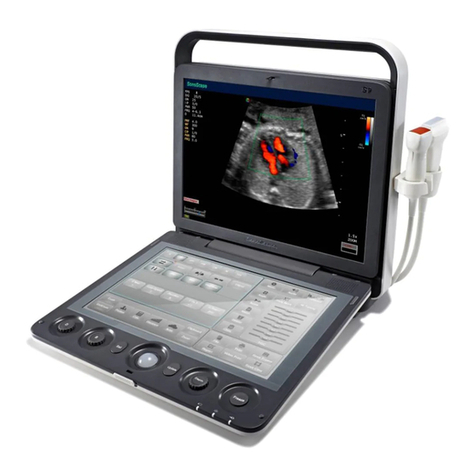
Sonoscape
Sonoscape Flagship S9 Installation guide
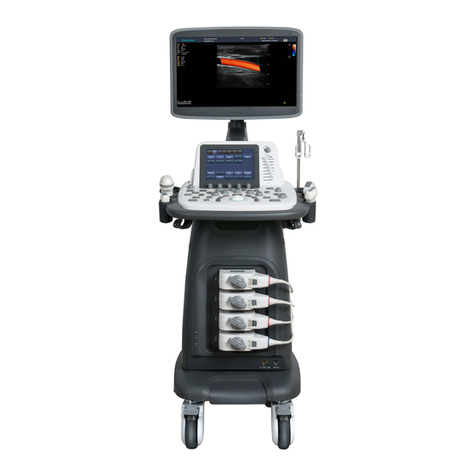
Sonoscape
Sonoscape S22 User manual

Sonoscape
Sonoscape S60 Series User manual
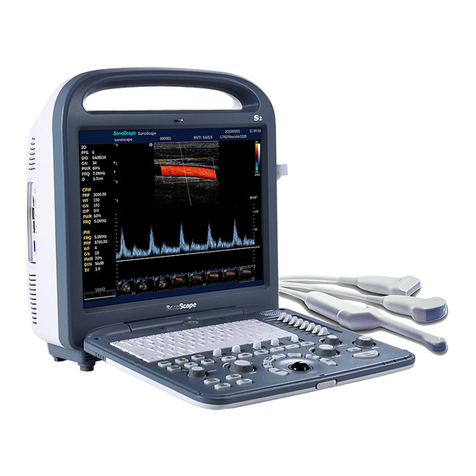
Sonoscape
Sonoscape S2 User manual
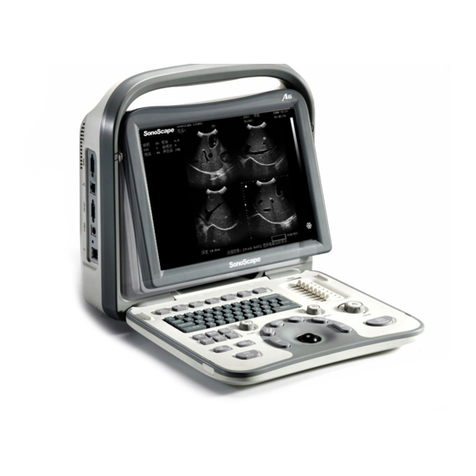
Sonoscape
Sonoscape A6T User manual
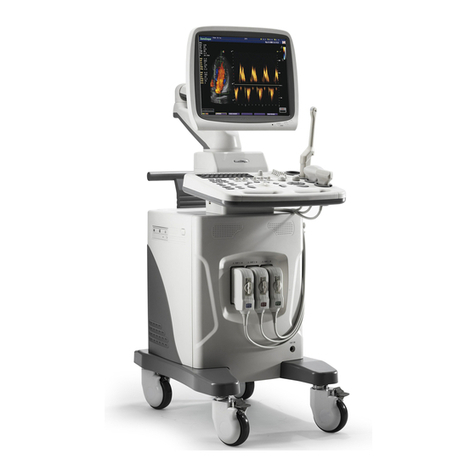
Sonoscape
Sonoscape SSI-6000 User manual

Sonoscape
Sonoscape S6 User manual
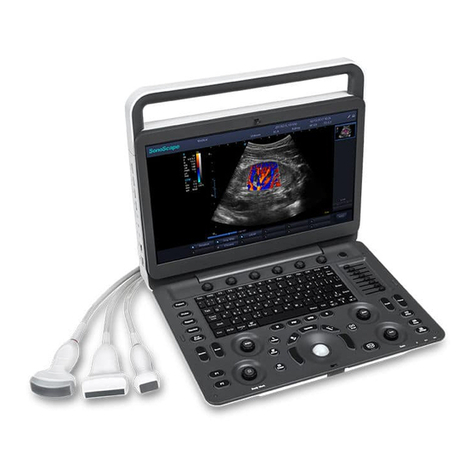
Sonoscape
Sonoscape E3 Installation guide

Sonoscape
Sonoscape S2 User manual
